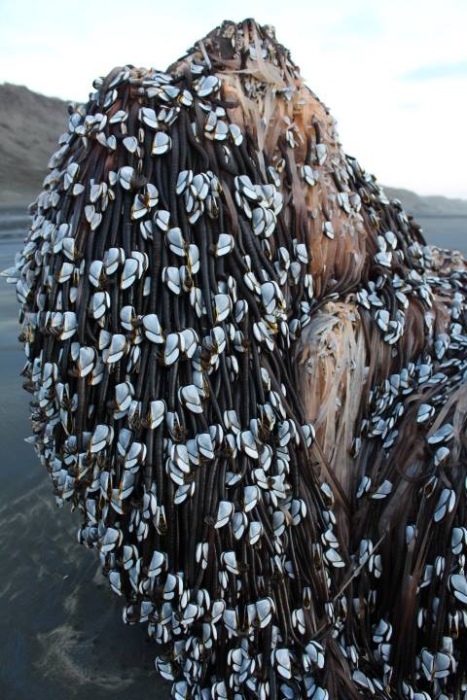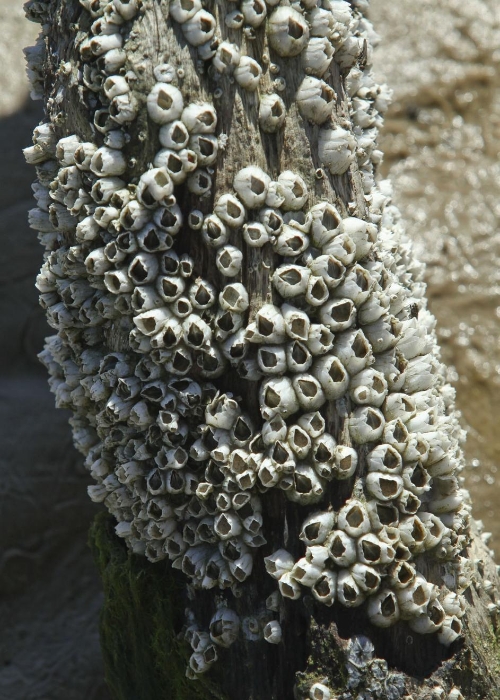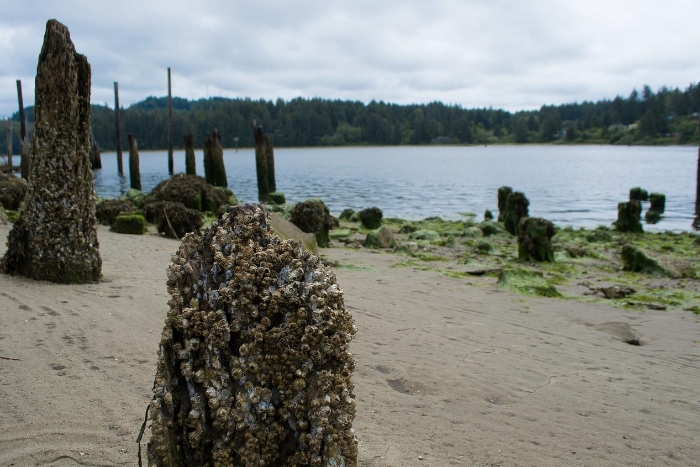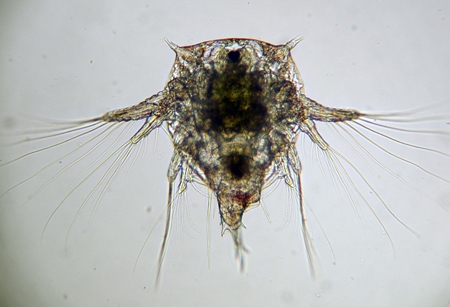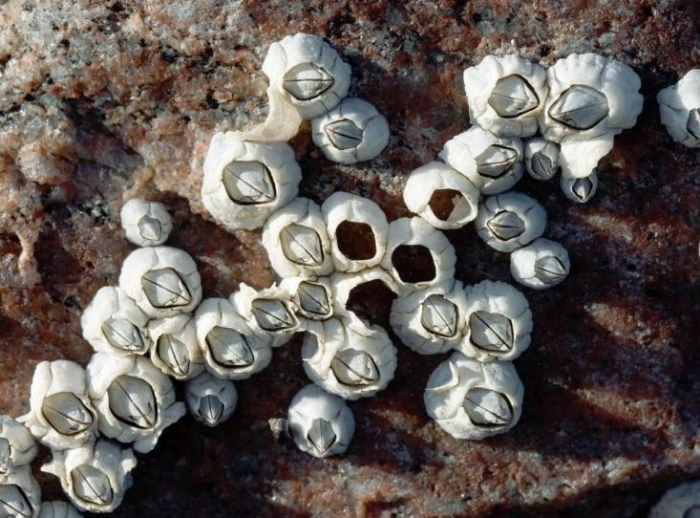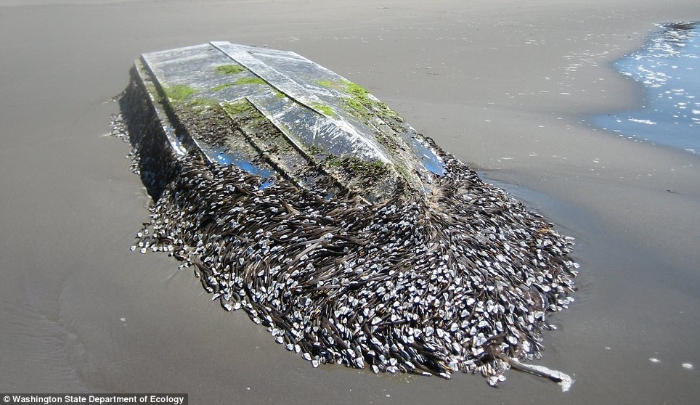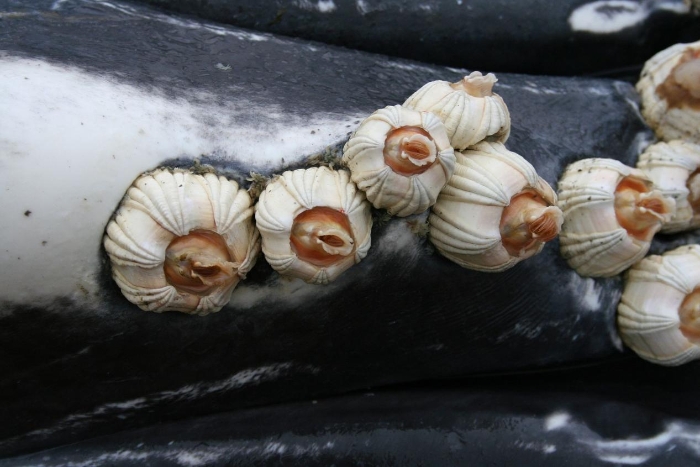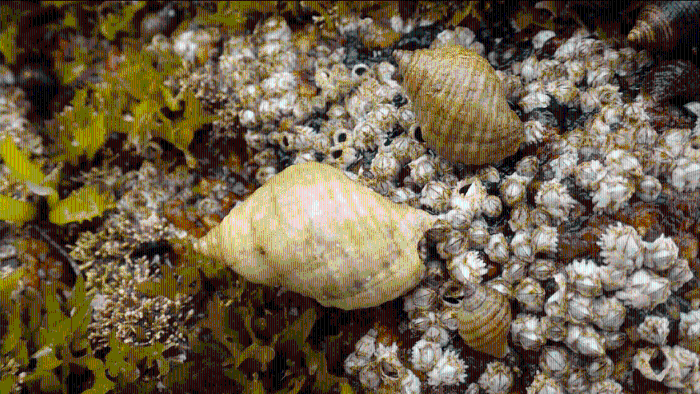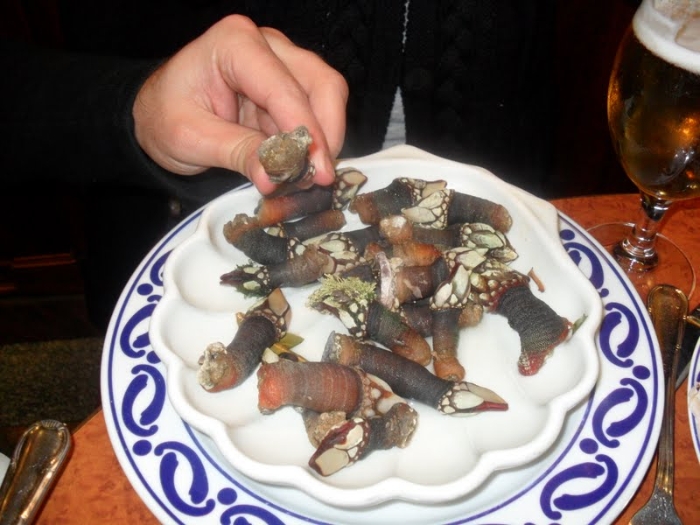“Psoriasis” in the Ocean: Barnacles
If there is a chance, be sure to try the delicious barnacles.
If there's a vote for the most tryptophobic creature in the ocean, barnacles are probably the winner.
Gooseneck barnacles on the beach. Image source: Earth Touch News
Acorn barnacles. Image source: Texas Saltwater Fishing Magazine
Are you starting to feel sick?
In addition to trypophobia caused by their flocking together, barnacles also have many other funny features. Today, let's learn about the magic of barnacles.
Closer to Shrimps and Crabs
On appearance, barnacles look similar to shellfish (shellfish are mollusks), but they are not mollusks, but crustaceans of phylum Arthropoda, which means that they are closer to shrimps and crabs than shellfish.
Barnacles. Image source: Wikipedia
Adult barnacles are often surrounded by a hard calcareous shell, which is made up of 4-8 shell plates with openings which are closable, so that barnacles can stretch out their thoracopods (typically six pairs of thoracopods) from the peristoma at high tide to prey, or close their peristoma at low tide to prevent moisture loss.
Barnacles are a kind of filter feeder, which eat almost anything they can catch, mostly plankton. They have well-developed thoracopods, which branch like tendrils to trap plankton in the water. Adult barnacles have degenerated antennae, and the bristles on their thoracopods are particularly sensitive, thus rendering them a sensitive sense of touch.
Barnacles live in a wide range and can be seen along coastlines around the world. They often adhere to rocky cliffs by the sea, which is more adhesive than most superglue, making it difficult for turbulent waves to wash them away.
Barnacles adhere to wood piles by the sea. Image source: Wikipedia
As you can see, barnacles live by anchoring and are unable to move at will. However, these are adult barnacles, and young barnacles are not so home-bound.
The More They Grow Up, the More Home-bound They Are
Barnacles are hermaphroditic creatures, but usually do not self-fertilize. Instead, they choose either sex arbitrarily to complete the task of reproducing offspring.
Prior to adulthood, barnacles need go through several larval stages. Barnacles that have just hatched are at the nauplius stage (the most typical larva of crustaceans). At this stage, the barnacles have no segment, but 1 head, 1 tail, 3 pairs of appendages and 1 middle eye, and live a planktonic life.
Nauplius. Image source: Wikipedia
Barnacles can move freely in the nauplius stage, but are too small in size (about 1 mm). They can paddle with appendages, but mostly move with the water current. After several ecdyses, the larvae at this stage ultimately enter the last larval stage before adulthood, i.e., cypris larva, which is also the stage when barnacles begin to change lifestyles.
The goal of cypris larva is to choose a suitable place for long-term life in the future. This is not an easy choice, because it concerns the quality of life in the future. Cypris larvae constantly explore potential habitats, and once they feel the place is right, they will settle down and anchor on the surface of substrate headdown, with the help of colloid secreted by their antennae. This anchoring process is irreversible, and barnacles will enter “home-bound” mode from then on.
On the whole, when cypris larvae select a site, they will weigh up many factors, such as surface structure of substrate, chemical properties, humidity, temperature and salinity, to determine whether this place is livable or not. However, cypris larvae cannot select on and on. This stage of barnacles can last from several days to several weeks. When the cypris larvae are running out of energy, they become less selective about their anchoring sites.
Barnacles live by means of anchoring. Image source: Oceana
Barnacles can be Quite Destructive
Due to this unique living habit, barnacles often make a lot of trouble to other animals and humans. In areas adjacent to the seashore, barnacles tend to adhere to any solid surface they can find, such as ships, rocks, driftwood and even other animals. It is estimated that barnacles on ships increase weight and drag by nearly 60%, and promote fuel consumption by up to 40%. With this kind of destructive power, barnacles are even categorized as marine fouling organisms that are harmful to shipping.
An abandoned ship covered with barnacles. Image source: dailymail
A study surveyed the harm of fouling organisms on ships across the world and discovered that more than 70% of the troubles were induced by barnacles. They adhered to ships, which not only increased sailing resistance and led to a surge in fuel consumption, but also ruined the surface coating of ships, and sped up the corrosion and rusting of hulls.
Apart from the impact on ships, barnacles can also do harm to a variety of marine or coastal structures, such as oil platforms and submarine optical cables, etc. If left unmaintained, these structures will be parasitized by barnacles and their ability to withstand erosion and storms will be greatly weakened.
Barnacles can also make trouble to marine aquaculture industry, especially the aquaculture of pearl shells. Barnacles will scramble for living space with pearl shells, leading to increased mortality of pearl shells.
In fact, many marine creatures may fall victim of barnacle parasitism, for example, whales. Barnacles parasitize the head, abdomen and other site of whales. Their presence can affect the movement speed of whales and impose extra burden on them, especially when barnacles colonize weak parts of the whale's skin and inflict pain upon the latter.
Barnacles parasitizing the throat of a whale. Image source: Wikipedia
Barnacles are also nasty parasites for sea turtles. Sea turtles swim slowly and have rough shells, so some of them may choose to make their homes here. Once the number of barnacles increases, they will greatly restrict the movements of turtles and eventually die from lack of access to food.
Volunteers help turtles remove adnascent barnacles. Image source: mymodernmet
Barnacles are dreadful parasites, but they are not without rivals. Conches can grind up the calcareous exoskeleton of barnacles and feast on them. Starfishes also have the ability to prey on barnacles, so barnacles will try to avoid these predators when settling down.
Conch and barnacle. Image source: Ecology
At last, let's talk about the problem that you are most concerned about, are barnacles edible?
Barnacles are edible, and the taste is good. They are fresher than razor clams, and called “delicacy from hell”. Gooseneck barnacles are a popular dish in Spain, Portugal and other countries. In Chilean cuisine, barnacles are also an ingredient in seafood stew.
Gooseneck barnacles can be made into a dish. Image source: Wikipedia
The cooking methods of barnacles are not complicated. They can be boiled, stir-fried, dried or pickled... They are delicious whatever the cooking method is. If there is a chance, be sure to try the delicious barnacles.
